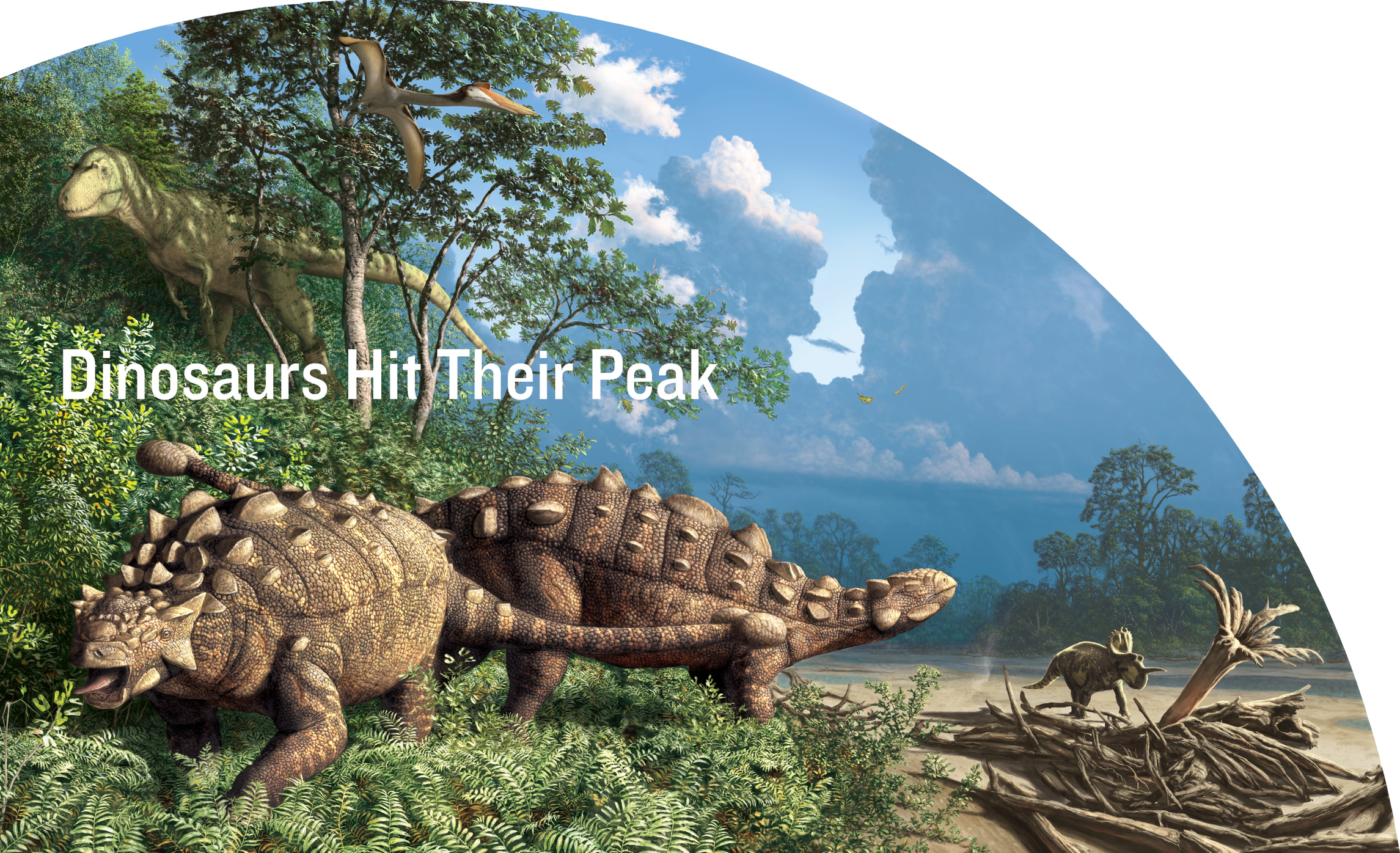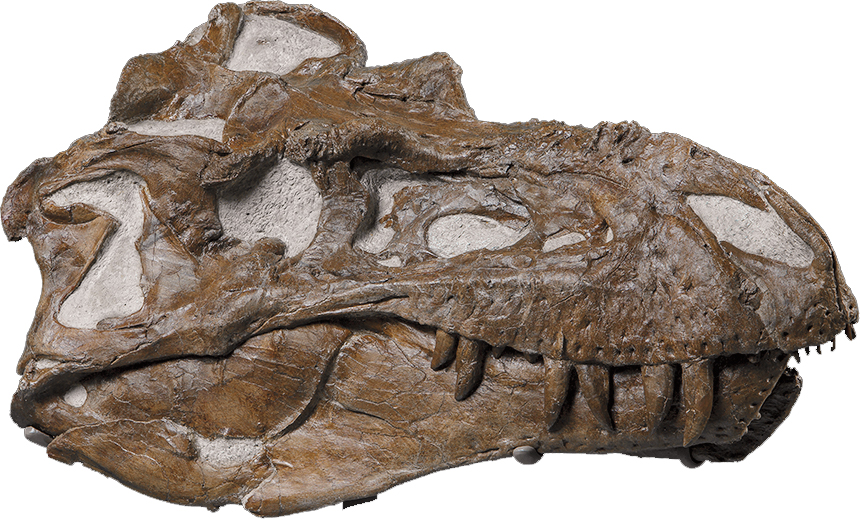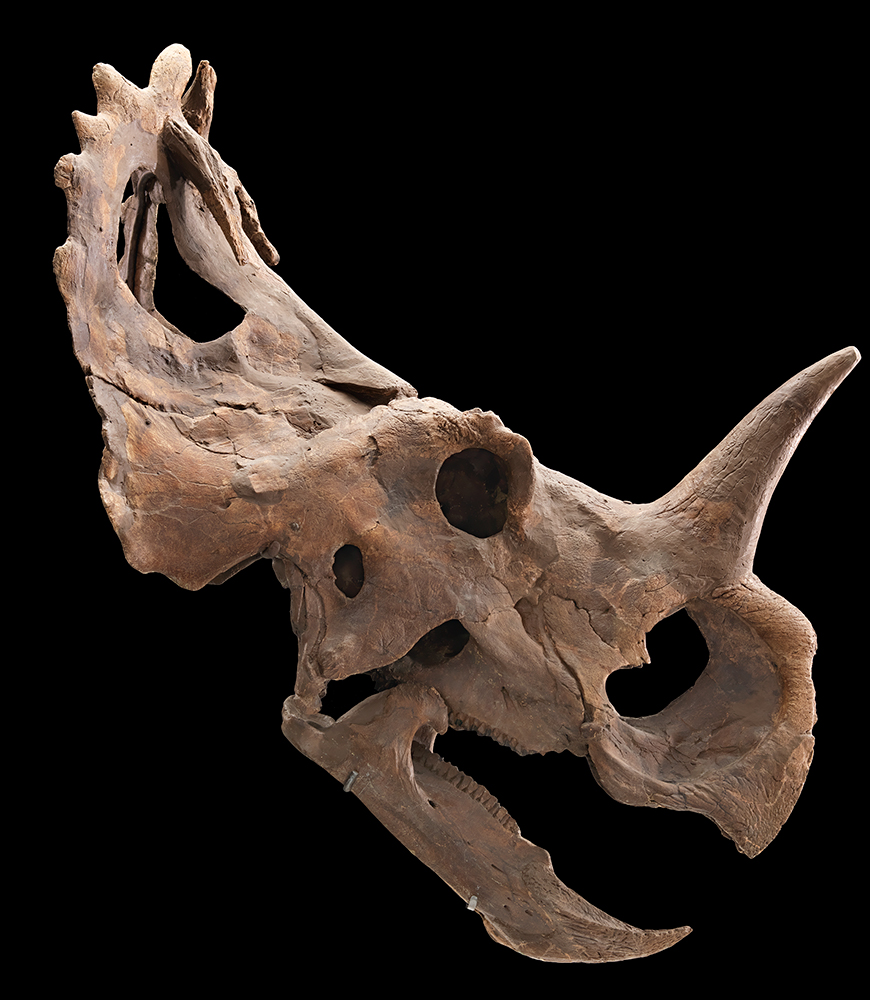

About 75 million years ago, in the Late Cretaceous, dinosaurs were abundant and more diverse than ever. Their warm world had widespread forest ecosystems. Although the continents were moving close to their present geographic positions, a seaway stretching from the Arctic Ocean to the Caribbean divided North America. Sauropods were now limited to the titanosaurs, but other dinosaur groups—such as ankylosaurs, tyrannosaurs, and ceratopsians—evolved many new species. Curious anatomical features appeared from head to toe (or tail) on these new creatures, including thick-domed skulls, elaborate bony frills, and tail clubs. This mural shows two ankylosaurs retreating from an advancing Gorgosaurus.

The tanklike ankylosaur Euoplocephalus tutus had knobby bones called osteoderms embedded in its skin and a tail club formed of fused osteoderms. This wide-mouthed browser had a large gut for processing plants.

Gorgosaurus libratus was a primitive member of the two-fingered, meat-eating theropods called tyrannosaurs.

The bizarre skull of the pachycephalosaur Stegoceras validum bore many knobs and spikes around a dome of bone several inches thick—useful features, as these dinosaurs may have butted each other in dominance displays.

Some Cretaceous dinosaurs sported large nose horns and ornate bony frills behind their heads. Centrosaurus apertus might have used its frill in courtship or combat, or to signal to others of its kind.